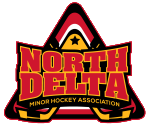HCSP
Risk Management - Hockey Canada Safety Program (HCSP)
The Hockey Canada Safety Program utilizes a proactive, preventative, common sense approach to keeping our children safe. The goal of the program is for the safety people to implement effective risk management programs with their own teams where player safety is the first priority at all times, both on and off the ice.
The safety person is a volunteer who has received HCSP accreditation. The HCSP program must be successfully completed every three (3) years in order to be a team’s safety person, even if the individual is a medical professional.
The safety person:
- Must conduct regular checks of players’ equipment.
- Is responsible for promoting proper warm up and conditioning techniques as a form of injury prevention.
- Coordinates plans for road trips, tournaments, etc. and assists in the overall supervision of the team.
- Establishes medical history files on every player and carries these files and the team first aid kit on every outing.
- Implements an Emergency Action Plan for the team and through this is prepared to react in the event of accidents, injuries and medical emergencies.
- Manages all injuries, learns to recognize serious injuries and refers injured players to qualified professionals.
- Must assume a leadership role in promoting the values of safety, fair play and integrity.
All HCSP clinics are now available ONLY as an on-line E-Learning course. Face to face HCSP clinics are no longer offered by BC Hockey.
1. On-line payment will be required to complete the registration process and enter the E-Learning modules.
2. The registration fee covers the cost of building and maintaining the E-Learning system as well as administration.
3. Contents of the previous HCSP manual are located in the E-Learning Handouts section. Once a delegate has completed the E-Learning course they have access to the course contents and handout material for 5 years.
4. The delegates’ HCR record is updated immediately upon completion of the course.
5. The entire program HCSP curriculum is on-line including 18 modules of 1 minute to 18 minutes in duration. The total estimated completion time is 3.5 to 4.0 hours.
Click Here to access the HCSP E-Learning course
Hockey Canada Safety Program
PURPOSE OF THE PROGRAM
The Hockey Canada Safety Program is a risk management and safety education program for the volunteer Safety
Person on all minor, junior, female and senior hockey teams. The goal of the program is to have you, the Safety
Person, ensure safety is your primary responsibility and first priority during all hockey related activities, both on and
off the ice.
All Safety Persons should utilize a proactive, preventative approach to safety while being prepared to react in the
event of accidents, injuries or medical emergencies.
Safety Person’s Responsibilities
As a Safety Person and team official you must play a leadership role in implementing effective risk management
programs with your own teams, enhancing the safety of players and all involved in amateur hockey.
The following are some responsibilities that the Safety Person should assume:
- Implement an effective Risk Management program with your team that strives to prevent injuries and accidents before they happen.
- Assume a proactive role in identifying and minimizing or eliminating risks during all activities, and if ever in doubt, always err on the side of caution.
- Promote and reflect the values of Fair Play and strive to instil these values in all participants and others involved in amateur hockey.
- Ensure that all players are provided with meaningful opportunities and enjoyable experiences free from physical and/or emotional maltreatment.
- Conduct regular checks of players’ equipment to ensure proper fit, protective quality and maintenance, and advise players and parents regarding the selection or replacement of equipment.
- Promote proper conditioning, warm-up, and cool down techniques as effective methods of injury prevention.
- Maintain accurate medical information files on all players and team officials and bring these to all team activities.
- Maintain a Player Injury Log.
- Maintain a fully stocked First Aid Kit and bring it to all team activities.
- Implement an effective Emergency Action Plan with your team and practice it regularly to ensure all involved understand their roles and are prepared to act promptly when an incident occurs.
- Recognize life-threatening and significant injuries, and be prepared to deal with serious injury.
- Manage minor injuries according to basic injury management principles and refer players to medical professionals when necessary.
- Recognize injuries that require a player to be removed from action. Refer players to medical professionals and coordinate return to play.
- Promote a healthy lifestyle with all hockey participants by being a good role model and by educating participants regarding hygiene, performance-enhancing substances, drug and alcohol abuse, nutrition and hydration.
- Facilitate communication with players, coaches, parents, physicians, therapists, paramedicalpersonnel, officials and other volunteers regarding safety, injury prevention and player’s health status.
- Act as a Safety Person for both your team and your opponents if only one Safety Person is present.
